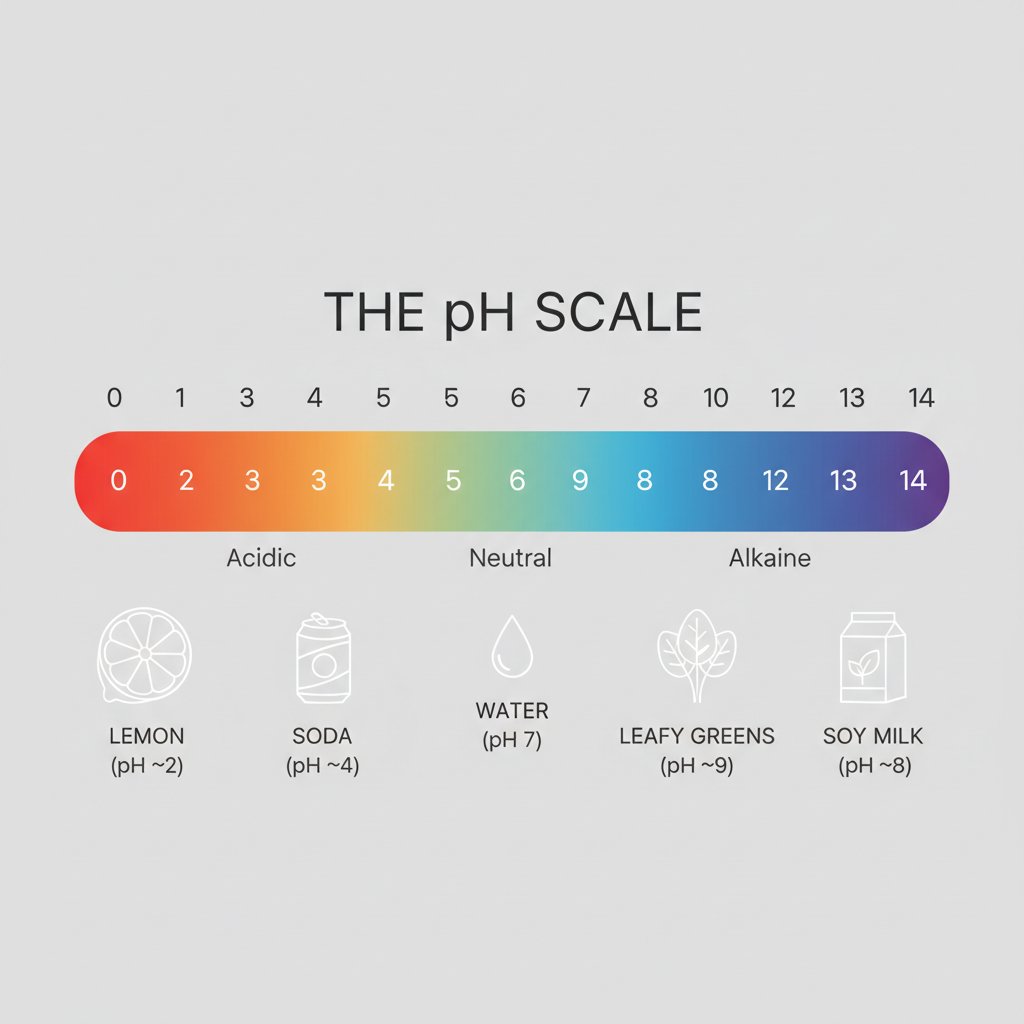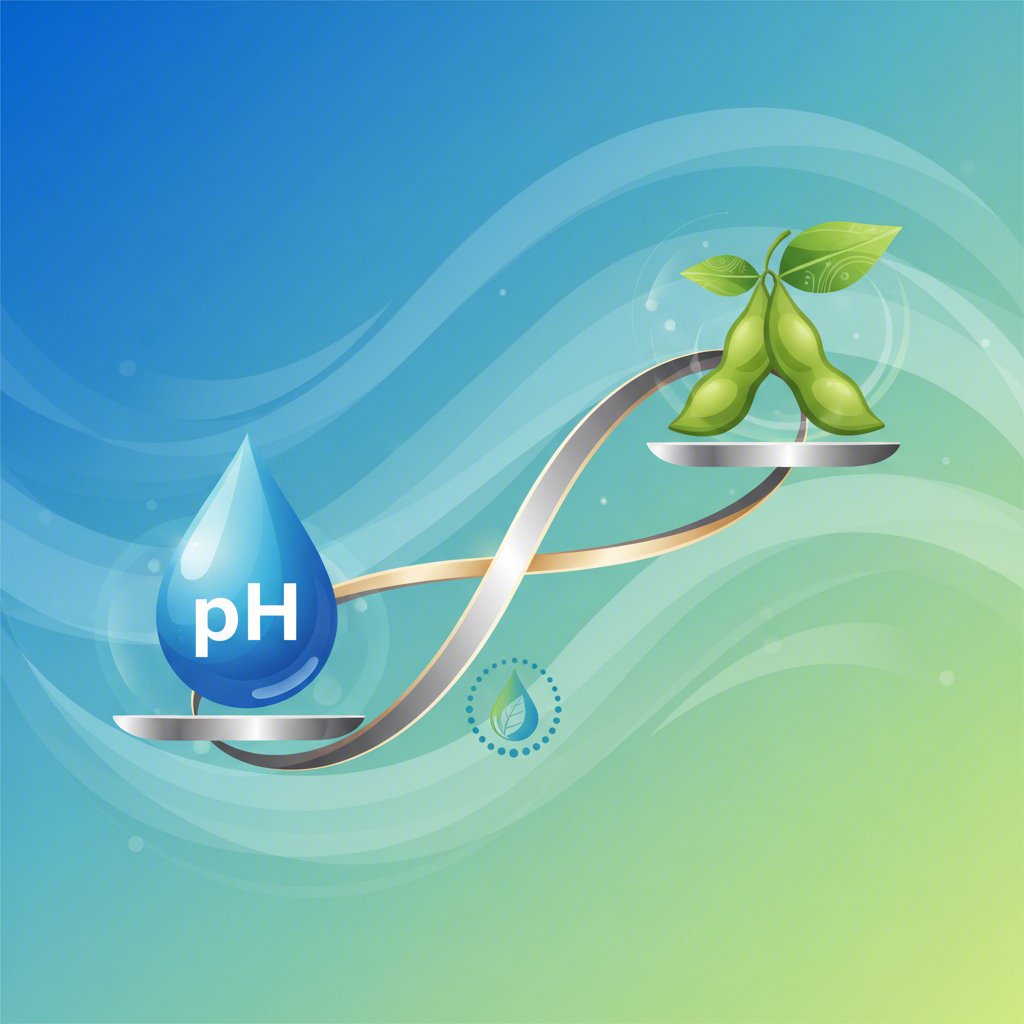TL;DR
Soy milk has a pH value that is typically near-neutral or slightly acidic, ranging from 6.5 to 7.2. However, the crucial takeaway for dietary purposes is that once metabolized, soy milk is considered an alkaline-forming food. This distinction is the key factor for individuals following an alkaline diet or managing conditions like acid reflux.
Understanding pH and the Alkaline Diet Concept
To understand the debate around soy milk, it’s essential to grasp two core concepts: the pH scale and the difference between a food’s inherent acidity and its effect on the body. The pH scale, which runs from 0 to 14, measures how acidic or alkaline a substance is. A pH of 7 is neutral (like pure water), anything below 7 is acidic, and anything above 7 is alkaline, or basic.
However, the popular alkaline diet isn’t concerned with the food’s pH before you eat it. Instead, it focuses on whether a food is acid-forming or alkaline-forming after it has been digested. This effect is sometimes measured by its Potential Renal Acid Load (PRAL). Some foods, like lemons, are acidic to the taste but have an alkaline-forming effect on the body. Conversely, other foods are acid-forming, leaving behind acidic byproducts that the body must neutralize.
According to proponents of the diet, consuming too many acid-forming foods can disrupt the body’s natural balance. As explained by health resources like WebMD, the diet encourages eating more alkaline-forming foods to promote better health, though scientific evidence supporting many of its broader claims is still developing. Generally, the following categories apply:
- Alkaline-Forming Foods: Most fruits, vegetables, nuts, seeds, and legumes like soybeans.
- Acid-Forming Foods: Meat, poultry, fish, dairy, eggs, grains, and processed foods.
- Neutral Foods: Natural fats, starches, and sugars.
The Definitive pH of Soy Milk: An In-Depth Analysis
So, where does soy milk fit in? Based on its chemical composition, soy milk has a pH value that hovers between 6.5 and 7.2. This places it in the slightly acidic to neutral range. For example, some sources note a pH of 7.0, which is perfectly neutral, while others place it closer to 6.8. This slight variation can depend on processing methods and any additives in the final product.
Despite its near-neutral pH, soy milk is consistently classified as an alkaline-forming beverage. As Healthline clarifies, while most legumes are acid-forming, soybeans are a notable exception and are considered neutral or alkaline-forming. When your body digests soy milk, it leaves behind alkaline minerals that contribute to a net alkaline effect. This makes it a favored choice for those adhering to an alkaline diet.
This characteristic also makes soy milk a generally good option for people with acid reflux. Its near-neutral pH doesn’t typically aggravate the esophagus, and its low-fat content (especially in unsweetened varieties) is less likely to trigger stomach acid production compared to high-fat dairy. For the most significant alkaline benefit and to avoid potential acid triggers, choosing unsweetened soy milk is the best approach.
Soy Milk vs. Other Milks: A Comparative pH Analysis
Choosing a milk often comes down to dietary goals, and understanding how different options compare is valuable. Soy milk stands out among plant-based alternatives for its alkaline-forming properties, but it’s not the only choice. Each type of milk has a unique profile regarding both its initial pH and its effect on the body.
Dairy milk, for instance, is slightly acidic, with a pH of about 6.7 to 6.9, and is considered acid-forming in the body. Other plant-based milks vary. Almond milk is often cited as being alkaline-forming, while oat milk, derived from an acid-forming grain, is typically acidic. Fresh coconut is alkaline-forming, but its effect can change depending on processing.
Here is a quick comparison of popular milk varieties:
| Milk Type | Typical pH Range | Effect on Body (Forming) |
|---|---|---|
| Soy Milk | 6.5 – 7.2 (Slightly Acidic to Neutral) | Alkaline |
| Cow’s Milk (Whole) | 6.7 – 6.9 (Slightly Acidic) | Acid |
| Almond Milk | 7.0 – 8.5 (Neutral to Alkaline) | Alkaline |
| Oat Milk | ~6.8 (Slightly Acidic) | Acid |
| Goat’s Milk (Pasteurized) | ~6.4 (Slightly Acidic) | Acid |
For those interested in creating fresh, additive-free plant-based milks at home, exploring a dedicated machine can be a great next step. Resources like Soy Milk Quick offer expert guides on the best plant milk makers available, helping you find a model that fits your needs for making delicious homemade almond, oat, or soy milk.

Frequently Asked Questions
1. What milk can you drink on an alkaline diet?
On an alkaline diet, the best choices are plant-based milks that are alkaline-forming. Unsweetened soy milk and almond milk are excellent options. Both are considered to have an alkalizing effect on the body after digestion, aligning perfectly with the principles of the diet.
2. Is soy milk ok for acid reflux?
Yes, for most people, soy milk is a good choice for managing acid reflux. Its pH is near-neutral, which means it is unlikely to irritate the esophagus. Furthermore, low-fat and unsweetened varieties are preferable as high-fat foods can sometimes worsen reflux symptoms. As always, individual reactions can vary, so it’s best to see how your body responds.
